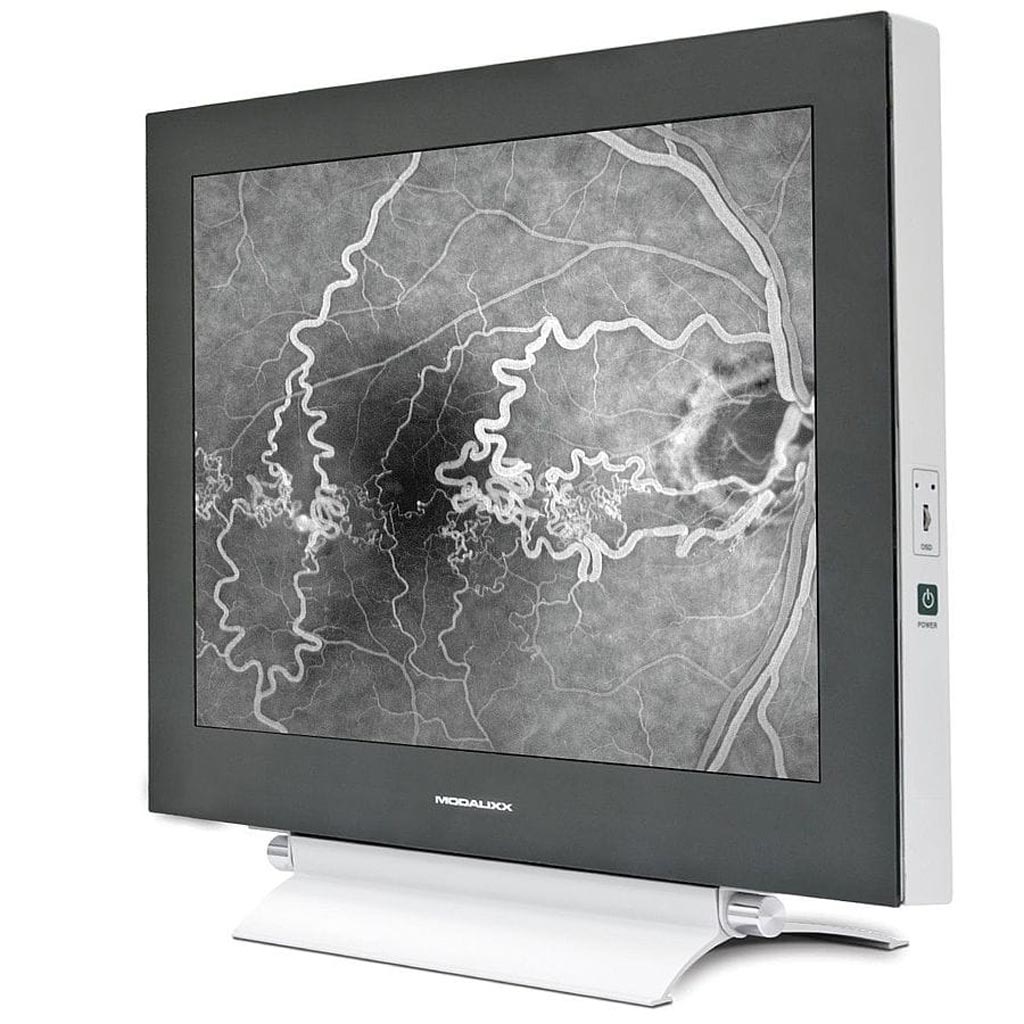Medical LCD Solution Replaces Older CRT Monitors
By MedImaging International staff writers
Posted on 06 Mar 2018
A novel grayscale liquid-crystal display (LCD) monitor can to autosync to any legacy grayscale or color analog cathode ray tube (CRT) modality and upscale it to megapixel resolution.Posted on 06 Mar 2018
The Ampronix (Irvine, CA, USA) Modalixx G202MDL display is compatible with almost all medical modality applications, including catheterization labs, magnetic resonance imaging (MRI) scanners, computed tomography (CT) devices, radiofrequency (RF) rooms, C-Arms, positron emission tomography (PET) scanners, nuclear medicine modalities, and portable X-ray machines. Compatible systems include devices from all major manufacturers, including Eizo, GE, Phillips, Siemens, and Toshiba, among many others.

Image: The Modalixx G202MDL grayscale display (Photo courtesy of Ampronix).
The G202MDL can convert small matrix pictures from legacy analog modalities to two megapixel images, without compromising image integrity, while providing at the same time a more realistic and brighter resolution, lower power consumption, no radiation, fewer repairs than CRTs, low cost of ownership, a longer life span, less weight and most importantly, compatibility with all modalities and any video signal parameter. Optional mounting solutions are available for mounting the Modalixx LCD display on almost any medical modality system.
The 20.1” LCD is capable of accepting any combination of BNC connections, including single to 5 BNC, 15 pin D-Sub connectors, and DVI-D, at resolutions ranging from 525 to 1600 horizontal pixels. Other features include wide viewing angles, high brightness (1200 cd/m² optimum), a 1,500:1 contrast ratio, a swift 25 ms response time, a user-friendly on screen display, and a durable aluminum and magnesium alloy housing.
“Ampronix is at the crossroads of this new age. We believe it is imperative to make the best technology at with the lowest possible price point whenever possible,” said Jamie Nguyen, senior communications specialist at Ampronix. “Our Modalixx display screens were created so health organizations only need to replace CRT screens instead of entire modalities, allowing clients to both save time and lives.”
Universal standards for CRT medical grade displays do not exist, making the replacement of the CRT display with an LCD problematic, in terms of compatibility with legacy modalities. While the CRT/LCD transition has been completed in most developed regions, including Japan, Western Europe, and North America, developing countries are still using CRTs in a wide range of applications, and their transition is projected to follow within the next 10 years.














